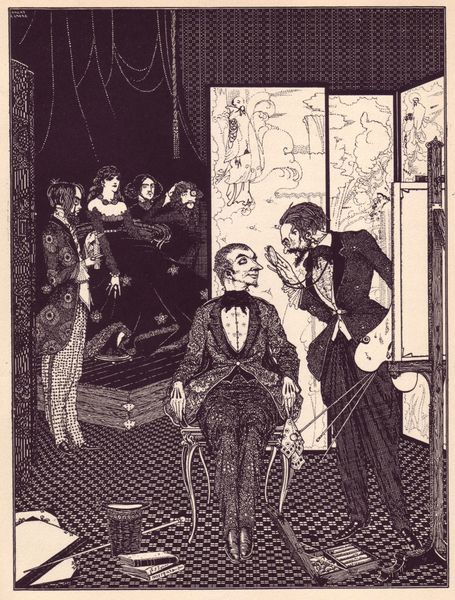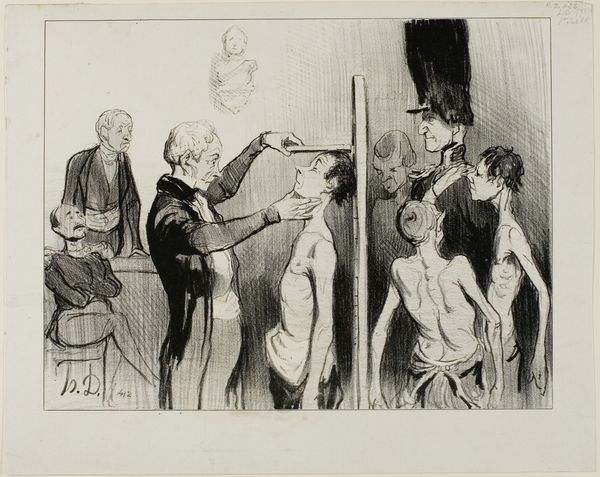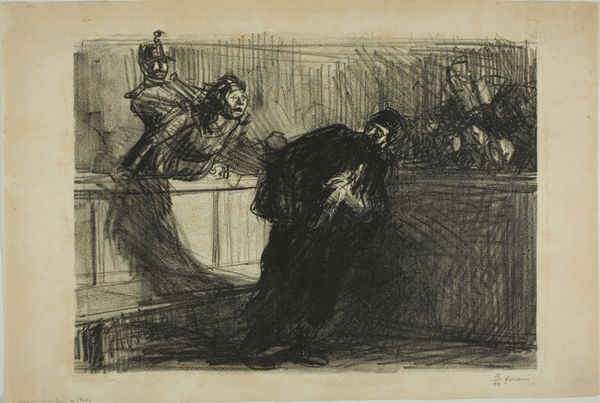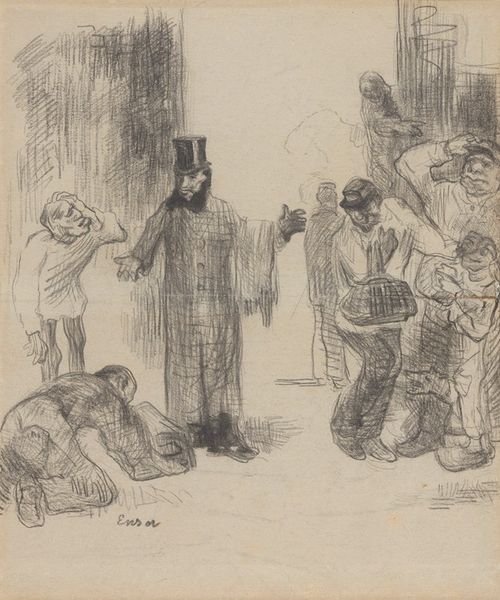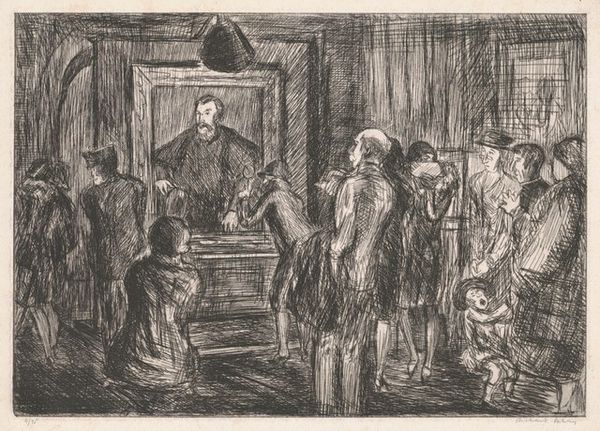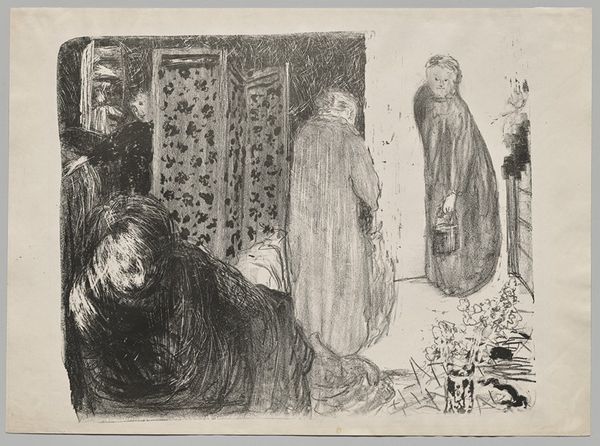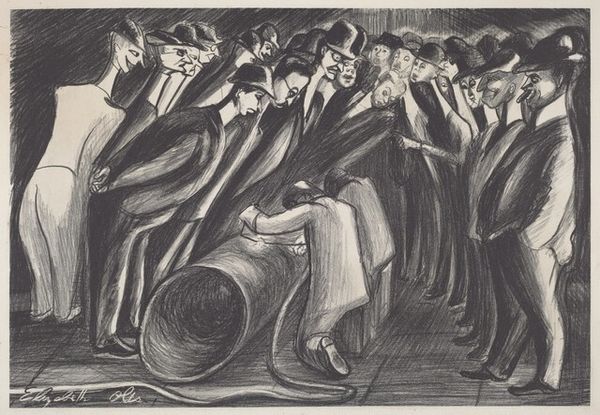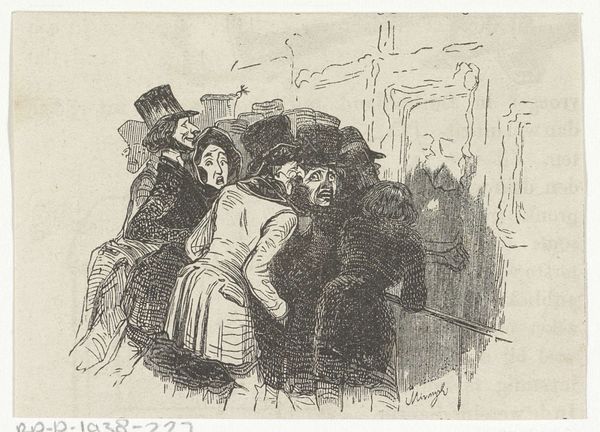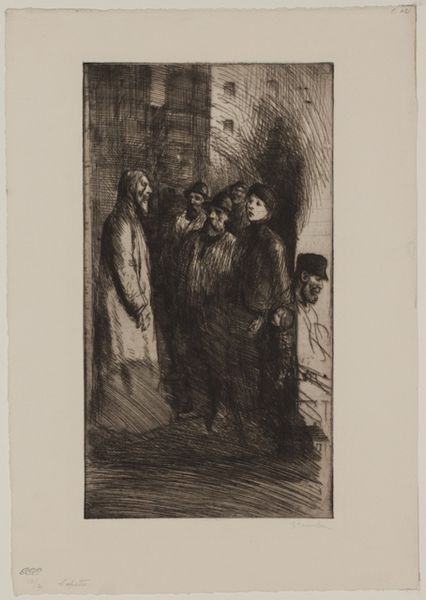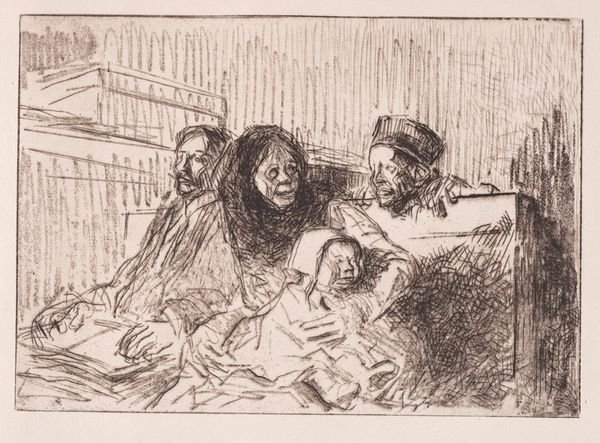
Copyright: Public Domain: Artvee
Curator: Today, we’re looking at Edvard Munch’s ink drawing, "After the Party," created in 1984. Editor: There's a striking tension in the composition. That clump of shadowy figures contrasted against the almost rigidly posed policeman… it feels like repressed anxiety on the verge of eruption. Curator: Indeed. Observe how Munch utilizes stark lines and washes of ink to suggest depth and emotional intensity. Note the contrast between the static figure of the policeman and the fluid rendering of the "party-goers." What semiotic reading do you extract from this configuration? Editor: Well, consider the materiality – ink, rapidly applied – suggesting spontaneity but also transience. These are not formally painted portraits; they’re impressions. The frenzied energy reminds me of newsprint from that era, immediately consumed and quickly discarded. Also, note the singular policeman: is that about external regulation of private behaviour? Or maybe internal repression surfacing in public? Curator: Precisely. One could interpret the policeman as representing societal constraints bearing down upon the revelers, even potentially manifesting from their internal psychology as repression. The group, as they are materially expressed in pooled dark ink, conveys, or indeed, constructs feelings of disquietude. The way Munch plays with line thickness creates both an imposing weightiness for some forms and ephemeral states for others. Editor: Thinking about the artistic and social context, consider that Munch was working at a time of shifting class structures, and the rise of mass media and entertainment changed social behaviours. Is "the party" emblematic of a superficiality that, when over, leaves a void, necessitating the stern watchfulness of the state or an external authority to provide order? What did partying mean for the working and middle classes during Munch's life? Curator: That is an astute line of inquiry, particularly when analysing the interplay between form and context, but is the piece literally reflective or actively participating in creating this idea and feeling? This kind of semiotic ambiguity is where Munch’s work shines, constructing various interpretations without firmly anchoring itself to any singular perspective. The lines are both deliberate and evocative. Editor: Ultimately, "After the Party" transcends simple representation. It invites us to confront those feelings of fleeting, sometimes melancholic pleasure and the specter of a coming social unease. It forces one to think of how the act of social display also hides and censors private emotions. Curator: Agreed, the material presence of ink here creates its own unique expressive landscape. It evokes anxieties that linger long after the last guest departs, reminding us about the powerful function art has to unsettle our comfortable conventions of viewing society.
Comments
No comments
Be the first to comment and join the conversation on the ultimate creative platform.
